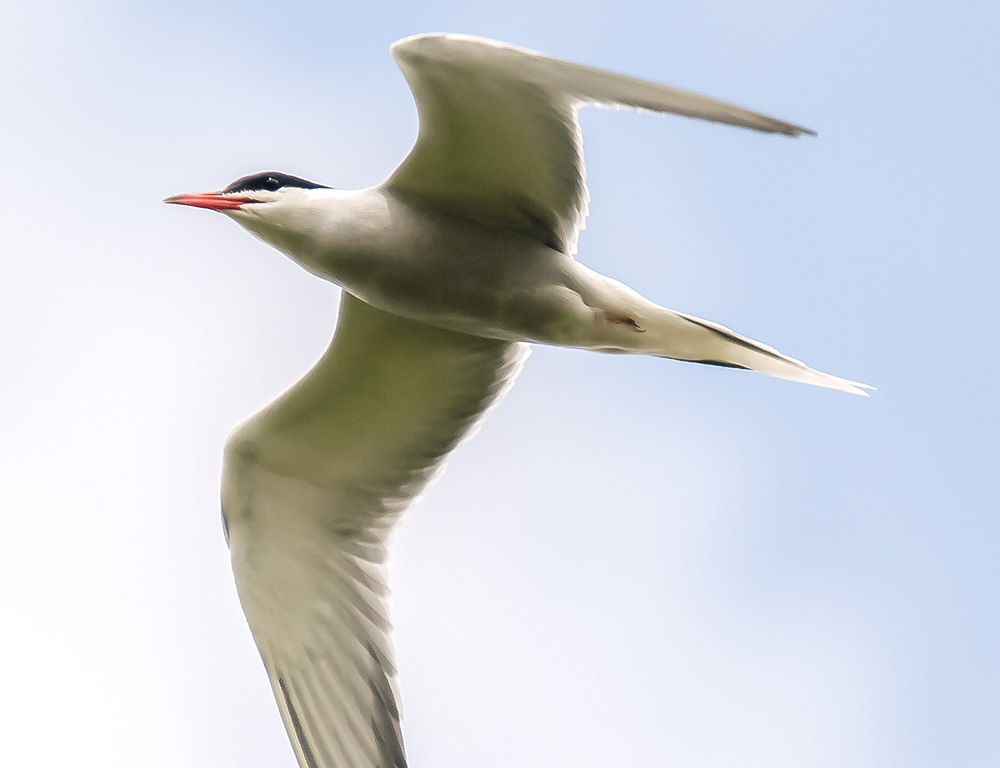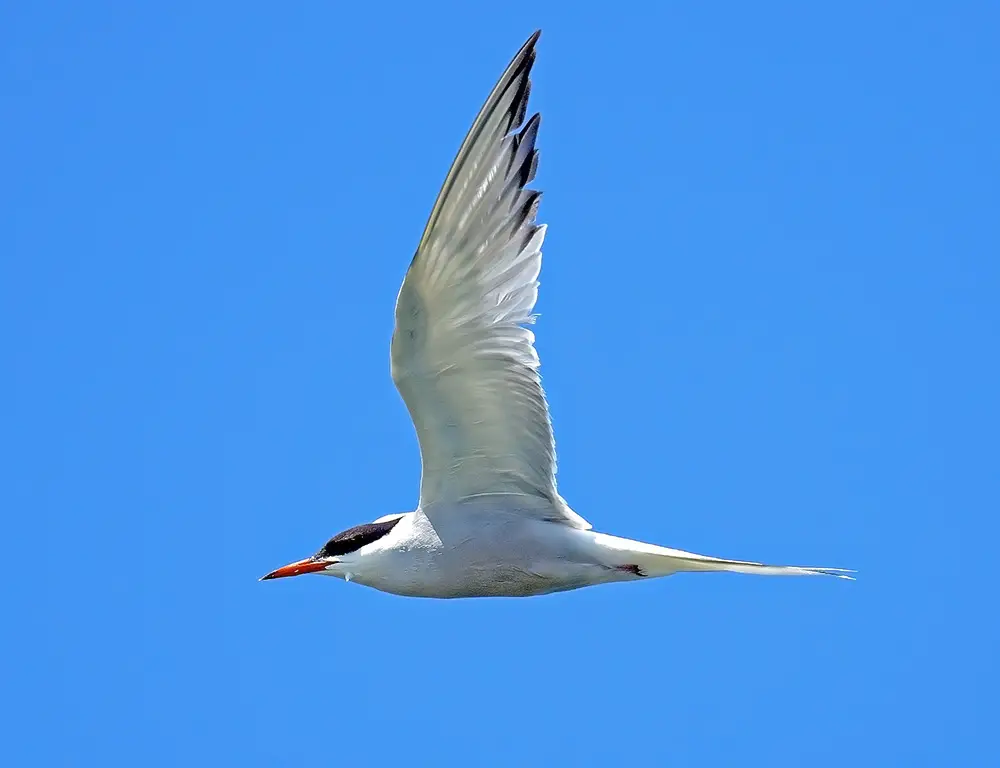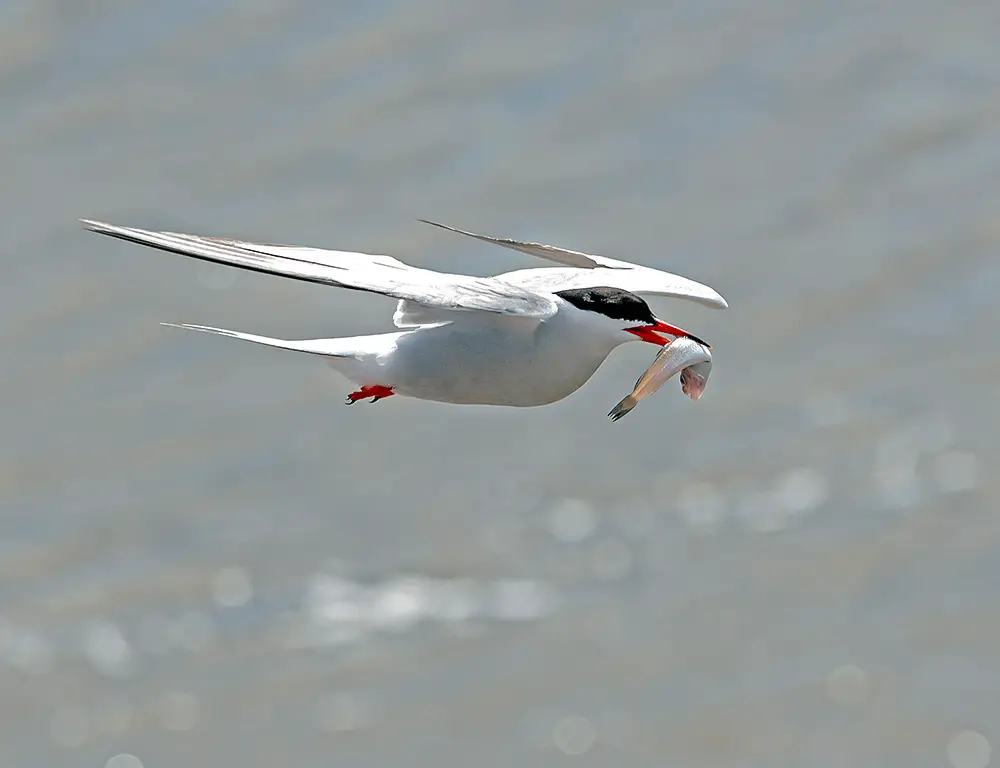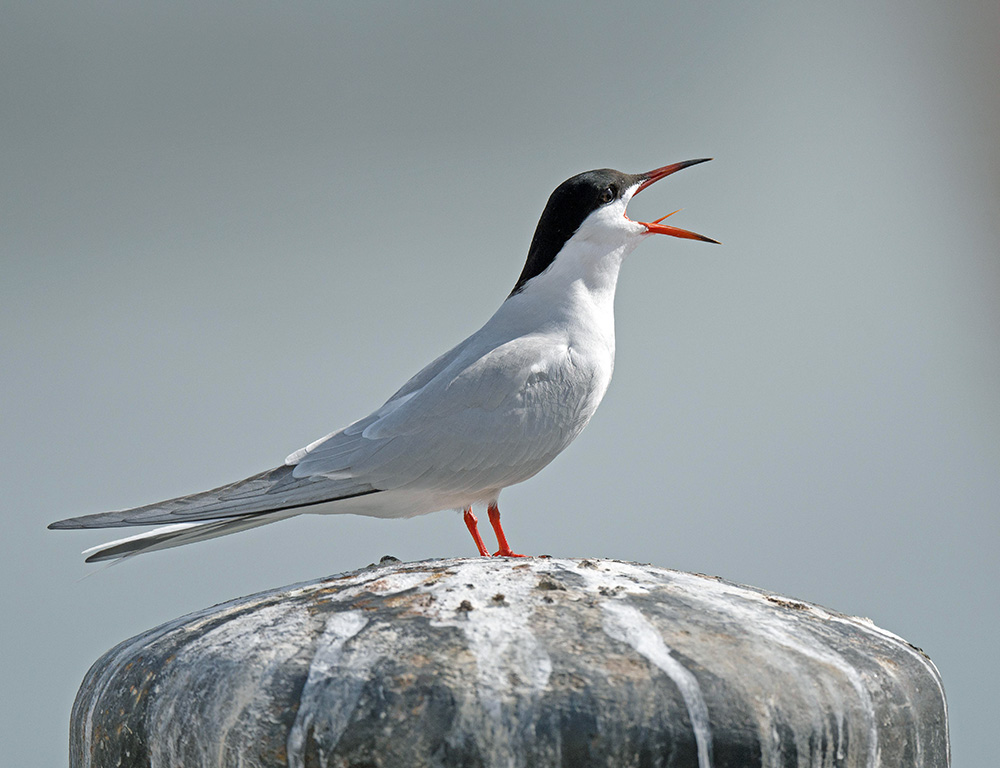The River Tern (Sterna aurantia) is a captivating bird species known for its elegant presence in freshwater habitats across Asia and Africa.
Distinguished by its striking black-capped plumage during the breeding season, vibrant yellow bill, and graceful flight, this medium-sized tern embodies the beauty of its watery domain.
Preferring rivers, lakes, and large ponds over coastal areas, River Terns are adept hunters, plunging into clear waters to catch fish and crustaceans precisely.
Their communal nesting behavior on sandbanks within freshwater bodies reflects their social complexity and dependence on undisturbed habitats.
However, despite their adaptability, River Terns face increasing threats from habitat loss, pollution, and human disturbance, underscoring the importance of conservation efforts to safeguard these emblematic birds and their aquatic ecosystems.

Physical Characteristics of River Tern: A Fascinating Avian Species
The River Tern (Sterna aurantia) possesses a set of physical characteristics that make it a remarkable bird species adapted to freshwater habitats.
Here are the key features of its appearance:
Size
River Terns are medium-sized birds, typically measuring between 38 to 43 centimeters (15 to 17 inches) in length. They have a wingspan of approximately 70 to 80 centimeters (28 to 31 inches).
Plumage
During the breeding season, River Terns exhibit striking plumage. They have a black cap on their heads’ crown, contrasting their white forehead and cheeks.
Their upperparts are dark grey, while their underparts are white. Outside the breeding season, the black cap transitions to a greyish-white with black dots and streaks.
Bill
River Terns have a distinctive yellow bill that is slender and pointed. This bill is well-suited for catching fish and other aquatic prey during plunge diving. It is slightly downturned, aiding in the bird’s hunting techniques.
Legs
Their legs are short and bright red, providing a striking contrast against their white underparts. These legs are adapted for perching and walking on various substrates found in freshwater habitats.
Tail
River Terns have a deeply forked tail, aiding their aerial agility and maneuverability. This tail shape allows them to make rapid changes in direction while flying and helps them navigate the complex environments of rivers and lakes.
Flight

River Terns have pointed wings and are skilled flyers. They use their wings to glide effortlessly over the water’s surface while searching for prey. When hunting, they can execute precise dives, plunging into the water to catch fish with remarkable accuracy.
Habitat and Distribution of River Tern: Insights Into the Natural Environment of Sterna Aurantia
The River Tern (Sterna aurantia) is a captivating bird species primarily found in freshwater habitats, setting it apart from many other tern species that typically inhabit coastal areas.
Here’s an overview of its habitat and distribution:
Habitat Preference
River Terns are well adapted to freshwater environments and strongly prefer habitats such as rivers, lakes, large ponds, and reservoirs. They are rarely found in coastal or tidal habitats, distinguishing them from other tern species.
Within these freshwater habitats, River Terns often inhabit areas with clear waters and abundant fish populations, which provide them with ample food resources.
Nesting Sites
River Terns typically nest on sandbanks, islands, or other elevated areas within freshwater bodies. These nesting sites offer protection from terrestrial predators and minimize disturbance from human activities.
The availability of suitable nesting sites is crucial for the breeding success of River Terns, as they rely on these areas to raise their young.
Distribution
The distribution of River Terns spans across parts of Asia and Africa. In Asia, they are found in India, Bangladesh, Sri Lanka, Nepal, Myanmar, Thailand, Laos, Cambodia, Vietnam, Malaysia, and Indonesia.
In Africa, River Terns can be found in Ethiopia, Kenya, Tanzania, Zambia, and Zimbabwe. While they may occur in localized regions within these countries, they are generally widespread across suitable freshwater habitats.
Migration
River Terns are migratory birds, undertaking seasonal movements between breeding and non-breeding areas. During the breeding season, they are found in their breeding grounds in northern regions, such as parts of Central Asia and Siberia.
As winter approaches, River Terns migrate southwards towards warmer climates in tropical areas, where they spend the non-breeding season.
Diet and Feeding Habits of River Tern: Insights Into the Aquatic Predation Techniques

The River Tern (Sterna aurantia) is a fascinating bird species known for its specialized diet and feeding habits adapted to its freshwater habitat.
Here’s an overview of its diet and feeding behaviors:
Piscivorous Diet
River Terns are primarily piscivorous, meaning they primarily feed on fish. Their diet consists mainly of small to medium-sized fish species found in freshwater habitats such as rivers, lakes, and ponds.
They are skilled hunters and rely on their keen eyesight to spot fish swimming near the water’s surface.
Plunge-Diving
One of the most characteristic feeding behaviors of River Terns is plunge-diving. They soar over the water, scanning the surface for potential prey.
When they spot a fish, they fold their wings and dive headfirst into the water, using their sharp bills to catch and grasp the fish.
River Terns are highly agile and can perform precise dives, often emerging from the water with their catch in their bills.
Aerial Foraging
In addition to plunge-diving, River Terns may also engage in aerial foraging. They may fly low over the water’s surface, snatching prey such as small fish and insects from the water with their bills while in flight.
This aerial hawking allows them to capture prey opportunistically and supplement their diet with various aquatic organisms.
Prey Selection
While fish make up the bulk of their diet, River Terns may consume other aquatic prey items depending on availability.
This may include crustaceans such as shrimp and crayfish, tadpoles, aquatic insects such as dragonflies and mayflies, and occasionally small amphibians.
Foraging Strategy
River Terns are highly adaptable foragers and may adjust their feeding strategies based on environmental conditions and prey availability.
They may concentrate their foraging efforts in areas where fish are more abundant, such as near riverbanks, shallow waters, or areas with high fish activity.
Feeding Territories
River Terns may establish feeding territories around their nesting sites during the breeding season. They may defend these territories from intruders and competitors to ensure access to sufficient food resources for themselves and their offspring.
Breeding and Nesting Habits of River Tern: Insights Into Reproductive Behavior

The breeding and nesting behaviors of the River Tern (Sterna aurantia) are fascinating aspects of its ecology, showcasing its adaptations to freshwater habitats.
Here’s an overview of how River Terns breed and nest:
Nesting Habitat
River Terns typically nest in colonies, congregating in sandbanks, islands, or other elevated sites within freshwater bodies. These nesting sites are strategically chosen to provide protection from terrestrial predators and minimize disturbance from human activities.
Breeding Season
The breeding season for River Terns usually occurs from March to May, although the exact timing may vary depending on the region and local environmental conditions. Breeding pairs engage in courtship displays and vocalizations to establish and reinforce pair bonds.
Nest Construction
River Terns construct simple ground nests consisting of shallow sand or gravel substrate scrapes. These nests are relatively inconspicuous and may be lined with small stones, twigs, or vegetation.
Both male and female River Terns participate in nest building, with the female typically taking the lead in arranging nesting materials.
Egg-laying and Incubation
Once the nest is constructed, the female River Tern lays a clutch of usually two to three eggs, although clutch size can vary.
The eggs are typically pale-colored with dark speckles or markings, providing camouflage against the nest substrate.
Both parents take turns incubating the eggs, each incubation shift lasting several hours. The incubation period typically lasts around three to four weeks.
Parental Care
Both male and female River Terns participate in caring for the eggs and chicks. They share responsibilities such as incubating the eggs, brooding the chicks to keep them warm, and feeding them once they hatch.
River Terns are attentive parents and may aggressively defend their nesting territories and chicks from potential threats.
Chick Development
After the eggs hatch, the chicks are precocial, meaning they are born with their eyes open and are capable of moving and feeding themselves shortly after hatching.
The parents continue to provide care and protection to the chicks, feeding them a diet of regurgitated fish and other small prey items. The chicks proliferate and fledge, or develop flight feathers, within several weeks of hatching.
Colonial Nesting
River Terns often nest in colonies, with multiple pairs of birds nesting nearby. Colonial nesting provides benefits such as increased protection from predators, cooperative defense of nesting sites, and information sharing about food sources.
Conservation Status of River Tern: Understanding Threats and Conservation Efforts

The River Tern (Sterna aurantia) is “Vulnerable” on the IUCN Red List. This classification indicates that the species faces a high risk of extinction in the wild if the factors contributing to its decline are not mitigated.
Threats
River Tern populations confront numerous threats, including habitat loss and degradation due to human activities such as dam construction, sand mining, and deforestation.
Pollution of freshwater habitats, human disturbance, climate change impacts, and overfishing pose significant risks to the species.
Conservation Efforts
Conservation initiatives are underway to protect River Tern populations and their habitats.
These efforts encompass habitat conservation and restoration, pollution control measures, minimizing human disturbance, research and monitoring programs, community engagement, education, and international collaboration.
These endeavors are critical for safeguarding the species and preserving freshwater ecosystems.
FAQs
How do River Terns catch their prey?
River Terns are skilled hunters, primarily catching fish by magically diving into the water.
Are River Terns migratory birds?
River Terns undergo seasonal migrations between breeding and non-breeding areas to follow food availability and suitable habitats.
How do River Terns build their nests?
River Terns typically build simple ground scrapes on sandbanks, islands, or elevated areas within freshwater bodies for nesting.
Do River Terns nest alone or in colonies?
River Terns often nest in colonies, with multiple pairs congregating in areas such as sandbanks or islands within freshwater habitats.
What role do River Terns play in freshwater ecosystems?
River Terns play a vital role as predators, controlling fish and insect populations and contributing to freshwater ecosystems’ overall health and balance.
To Recap
The River Tern (Sterna aurantia) symbolizes beauty and resilience in freshwater ecosystems across Asia and Africa. With its distinctive appearance, graceful flight, and adept hunting skills, this bird enriches the biodiversity of rivers, lakes, and ponds.
However, the River Tern faces growing threats from habitat degradation, pollution, and human disturbance, highlighting the urgent need for conservation action.
Protecting its nesting sites, preserving water quality, and minimizing human impact are crucial steps to ensure the continued survival of this species and the ecological balance of its habitats.
By working together to address these challenges and raise awareness about the importance of freshwater conservation, we can secure a brighter future for the River Tern and the diverse array of life it represents.